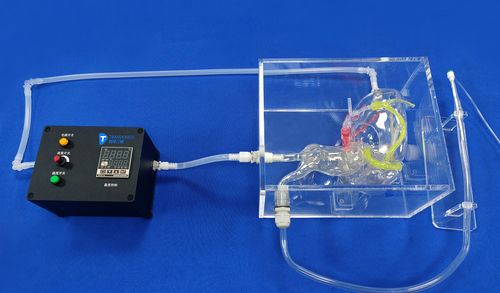
#Industry News
Coronary Artery Angioplasty: A Life-Saving Intervention for Cardiovascular Health
PCI Training Simulator II
Introduction
Coronary artery angioplasty, also known as percutaneous coronary intervention (PCI), is a minimally invasive procedure that has revolutionized the treatment of coronary artery disease (CAD). Widely regarded as a safe and effective intervention, angioplasty offers significant benefits to patients suffering from blocked or narrowed coronary arteries. This article explores the procedure, its indications, and the positive impact it has on cardiovascular health.
Understanding Coronary Artery Angioplasty
Coronary artery angioplasty involves the use of a catheter, a thin, flexible tube that is inserted into the blocked or narrowed coronary artery. The catheter is equipped with a small balloon at its tip, which is inflated once it reaches the narrowed segment. The inflation of the balloon compresses the plaque against the artery walls, widening the artery and restoring blood flow to the heart muscle. In some cases, a stent—a small mesh tube—is also inserted to help keep the artery open.
Indications for Angioplasty
Coronary artery angioplasty is primarily performed for patients with significant coronary artery stenosis or those experiencing symptoms of CAD, such as chest pain (angina) or shortness of breath. Additionally, angioplasty may be considered for patients experiencing a heart attack (myocardial infarction) caused by a blocked artery. The procedure aims to alleviate symptoms, improve blood flow, and prevent further complications.
Benefits of Coronary Artery Angioplasty
1.Restores Blood Flow: By reopening blocked or narrowed arteries, angioplasty restores blood flow to the heart muscle, improving oxygen supply and reducing the risk of heart damage.
2.Relieves Symptoms: Angioplasty often provides immediate relief from angina symptoms, allowing patients to resume their daily activities with reduced discomfort.
3.Prevents Heart Attacks: Timely angioplasty during a heart attack can help restore blood flow swiftly, minimizing the extent of heart muscle damage and potentially saving lives.
4.Enhances Quality of Life: By improving heart function, angioplasty can significantly enhance a patient's quality of life, allowing them to engage in physical activities without limitations imposed by CAD symptoms.
5.Cost-Effective: Compared to traditional open-heart surgery, angioplasty is a less invasive and cost-effective procedure, resulting in shorter hospital stays and faster recovery times.
Conclusion
Coronary artery angioplasty has emerged as a game-changer in the field of cardiovascular medicine, offering hope and restored health to countless individuals suffering from coronary artery disease. With its ability to restore blood flow, relieve symptoms, and prevent heart attacks, angioplasty has become an invaluable tool in the management of CAD. As technology advances and research continues to refine this procedure, coronary artery angioplasty is expected to play an even greater role in promoting cardiovascular health and saving lives.





